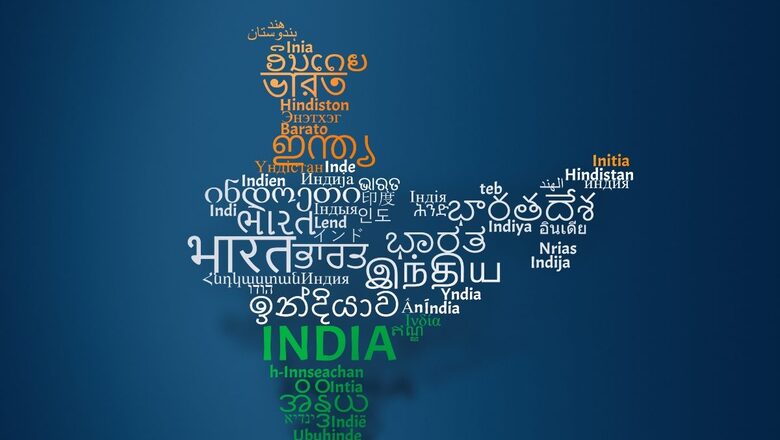
views
“What’s in a name? That which we call a rose
By any other name would smell as sweet.”
—Romeo and Juliet (Act II, Scene 2)
Thus said the leading lady to the protagonist in William Shakespeare’s classic Romeo and Juliet. The subtle message from these famous lines is that the character of an object or person does not change with the name. One is reminded of these famous lines whenever there is a controversy regarding the name of a place, and this time is no less than that of the country.
Ever since the newly formed Opposition conglomerate has given itself the acronym I.N.D.I.A., a few enthusiasts from the BJP have been asking for doing away with the name of India for the country and just retain ‘Bharat’. This has been countered by the crusaders on the Opposition’s side claiming that this country never ever had the name Bharat. They hand out the argument that the existence of the present country as a political unit is a deed of the British, who called the land India.
It’s true that from the time medieval, the sea explorers from the European continent went looking for the fairyland called India and in the process found the West Indies and the East Indies before Vasco da Gama finally found the sea route to the sub-continent. Vasco da Gama, a Portuguese explorer, found the direction by way of the Cape of Good Hope in South Africa and linked Europe and Asia by an ocean route, connecting the Atlantic and the Indian oceans.
But then not to forget that the name India existed only in the Western texts and it was their interpretation of the land beyond the river Indus. However, in the Indian texts, there always existed the name Bharat. The most common example is the ‘sankalp’ (vow), which is taken before the commencement of any puja in Hindu ritualism. The ‘sankalp’ mantra specifically mentions the name of the performer of the puja and the geographical location which mentions Jambudvipa, Bharat Khande and Bharat Varshe followed by more specific details like the house number, district and the state. Jambudvipa has been part of the scriptures but in the historical texts its was Ashoka who defined it as Greater India consisting of the present day India, Sri Lanka, Maldives, Bangladesh, Nepal, Bhutan, Pakistan and Afghanistan. Thus ‘Bharat Khande’, the sub-continent and ‘Bharat Varshe’, the country which is today constitutionally known as India, that is Bharat.
And for those who thought that respect for Bharat has emerged only now, they should read the Constituent Assembly debates, which chose a national anthem which has Bharat mentioned in it. Interestingly, the constitution makers debated whether to select the name Bharat or Hindustan for the country.
Hindustan has Persian origin, an identity strengthened during the Sultanate and Mughal periods. Since Persian was the language of the court when the British arrived, they too preferred calling India ‘Hindustan’ in the ‘local’ language. However, the majority in the Constituent Assembly favoured the use of Bharat over Hindustan as it reflected the ancient culture rather than a name given by the medieval aggressors. However, the debate did not end with the Constituent Assembly.
In 2012, Congress MP Shantaram Naik introduced in Rajya Sabha a bill to amend the first article of the Constitution. He proposed three main changes:
- That in the Preamble to the Constitution, the word ‘Bharat’ be substituted for the word ‘India’.
- That for the phrase ‘India, that is Bharat’ the single word ‘Bharat’ be substituted.
- That wherever the word ‘India’ occurs in the Constitution, the word ‘Bharat’ be substituted.
Stating his reasons, the Member of Parliament declared. In the justification of his demand, he said that ‘India’ denotes a territorial concept, whereas ‘Bharat’ signifies much more than the mere territories of India.
In 2014, Yogi Adityanath, the incumbent chief minister of Uttar Pradesh, had moved a Private Member’s Bill in the Lok Sabha, seeking the substitution of the word ‘India’ in the Constitution with ‘Hindustan’, and proposing ‘Bharat’ as the primary name of the country. His bill proposed to amend the language of Article 1 as, “Bharat, that is Hindustan, shall be a Union of States.”
Those who have been critical of the use of Bharat have said that Bharat has always been portrayed as a symbol of Hinduism and the Vedic civilisation of Aryavrat. Whereas, those who have been critical of the use of the word India say it’s a creation of Western modernity. However, the sentiments and justifications for having the name ‘India, that is Bharat’ was best given on November 18, 1949, in the Constituent Assembly by Pandit Thakur Das Bhargava, who said, “As regards the name of the country the term “India that is Bharat” has been laid down in the Constitution and some of my friends objected to this term. As for me, I have no serious objection to it. It is a fact that we cannot live in isolation from the rest of the world; we have centuries-old connections with England and the rest of the world. The world will always know us by the name of India. But so far as we are concerned, in our hearts and souls our country shall always remain as Bharat. So the term India and Bharat have been bracketed in order to meet the needs of our countrymen as well as of the outsiders. The world will call us as India and we ourselves will call us as Bharat. Thus there will be a blending of the East and the West.”
The writer is an author and president, the Centre for Reforms, Development & Justice. Views expressed in the above piece are personal and solely that of the author. They do not necessarily reflect News18’s views.



















Comments
0 comment